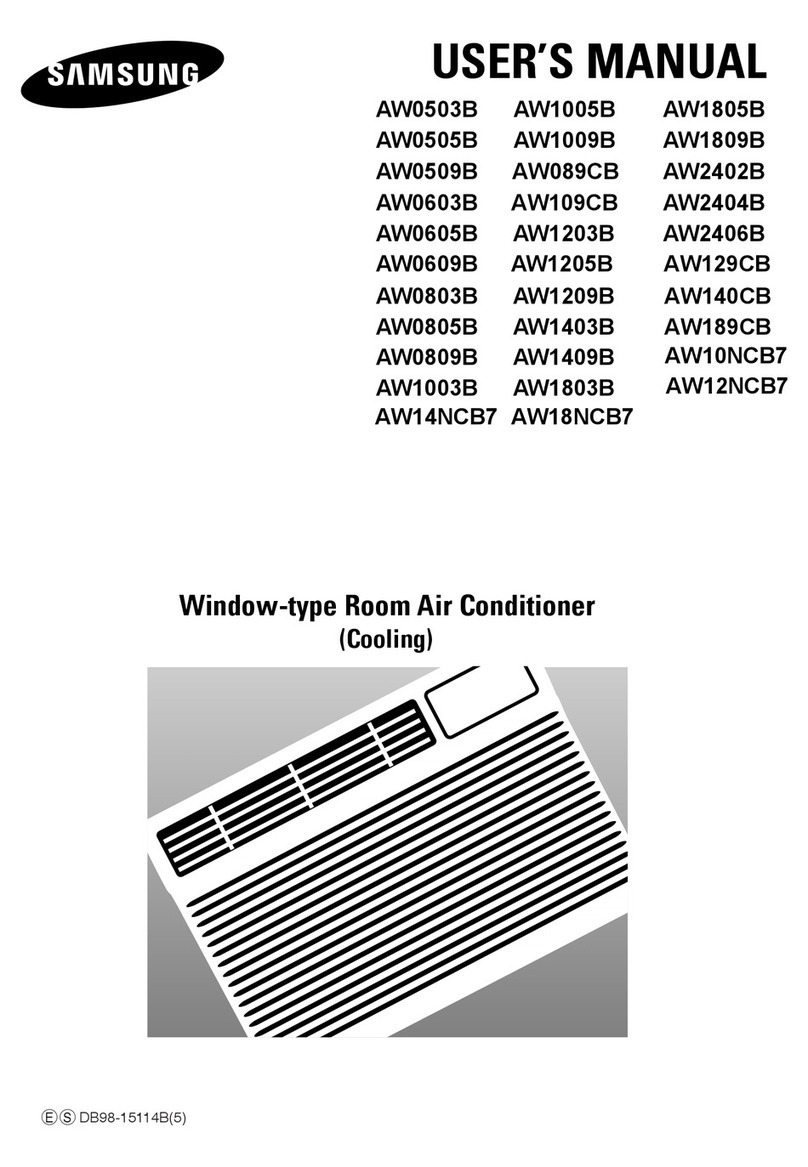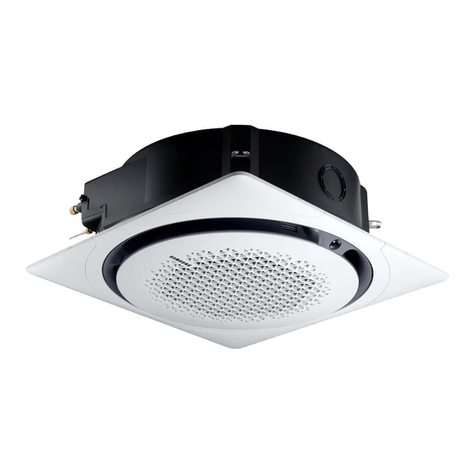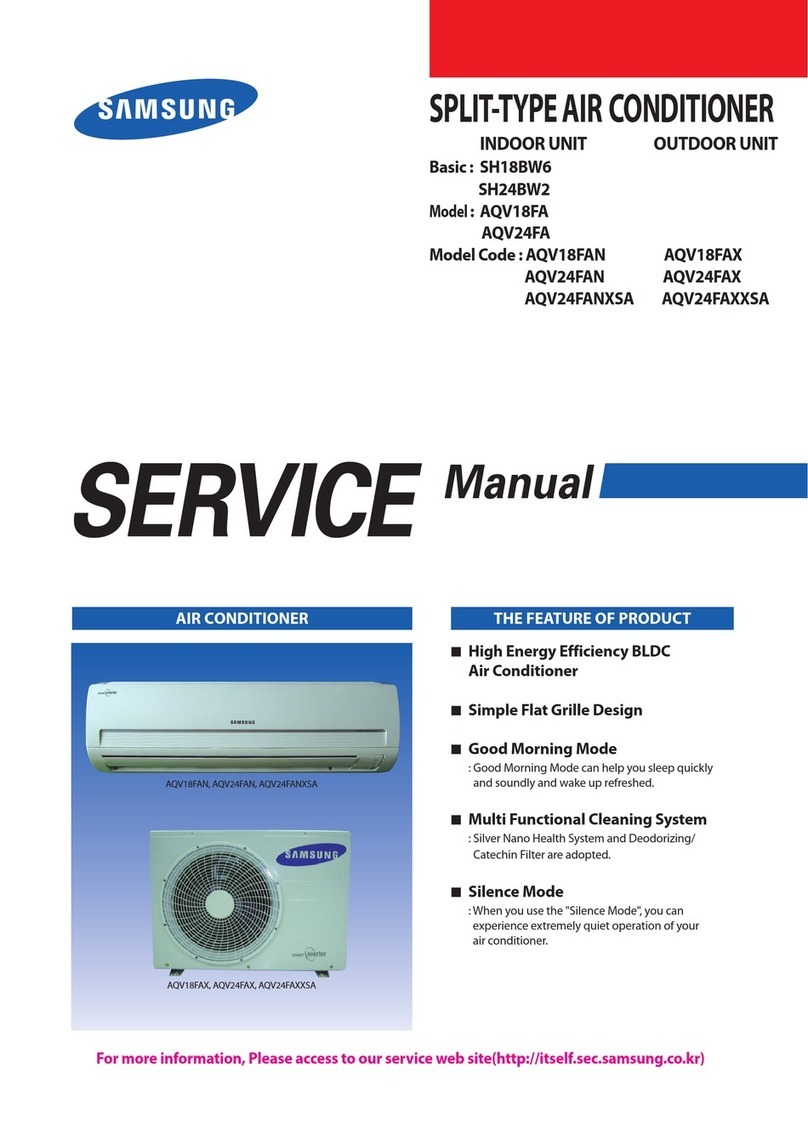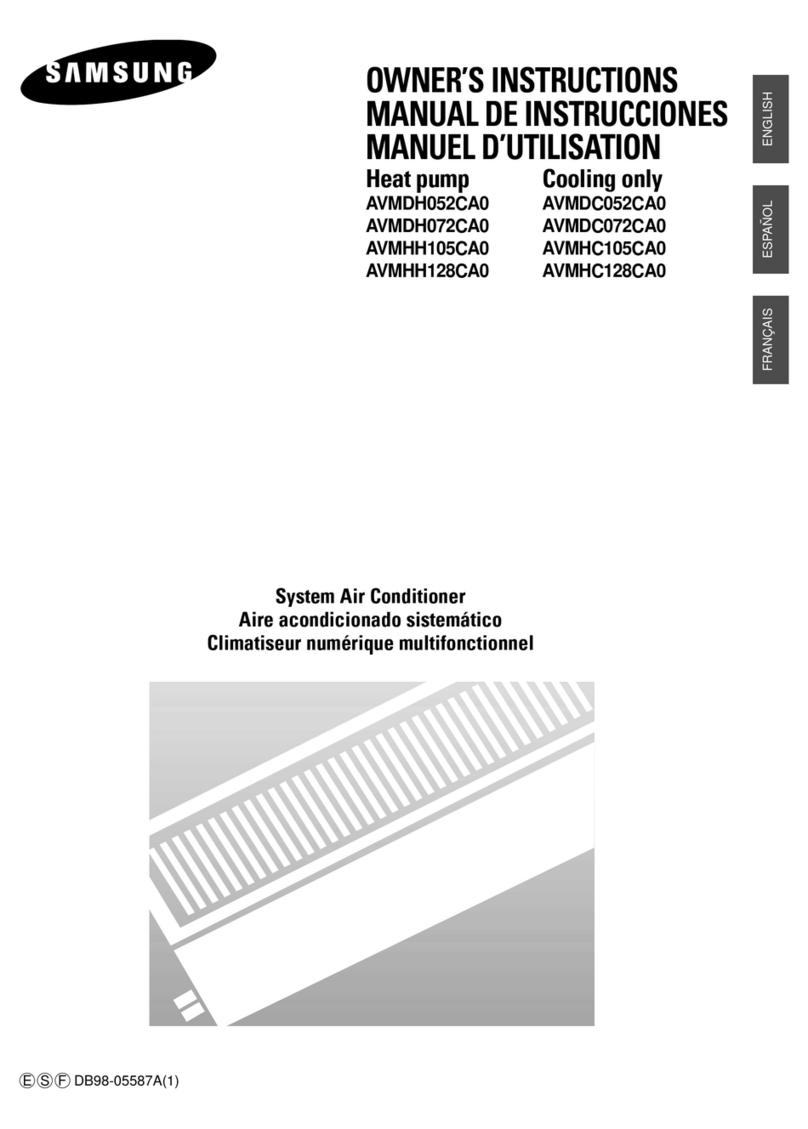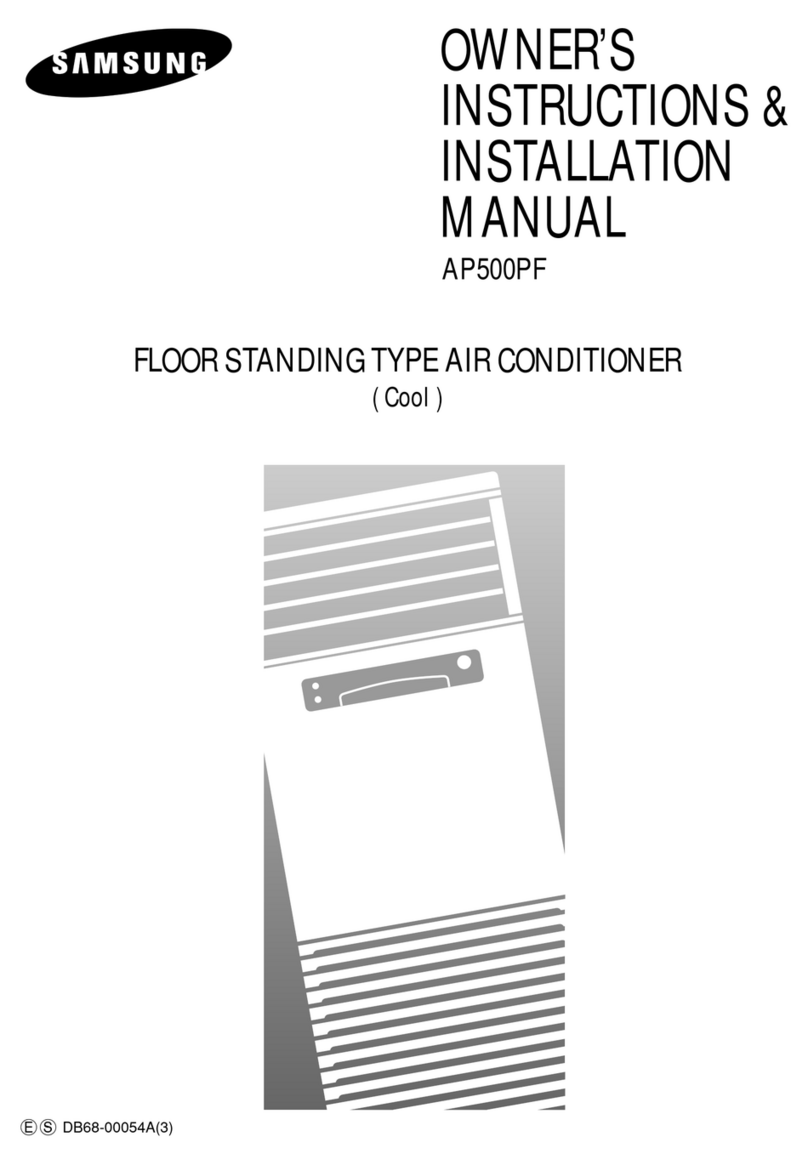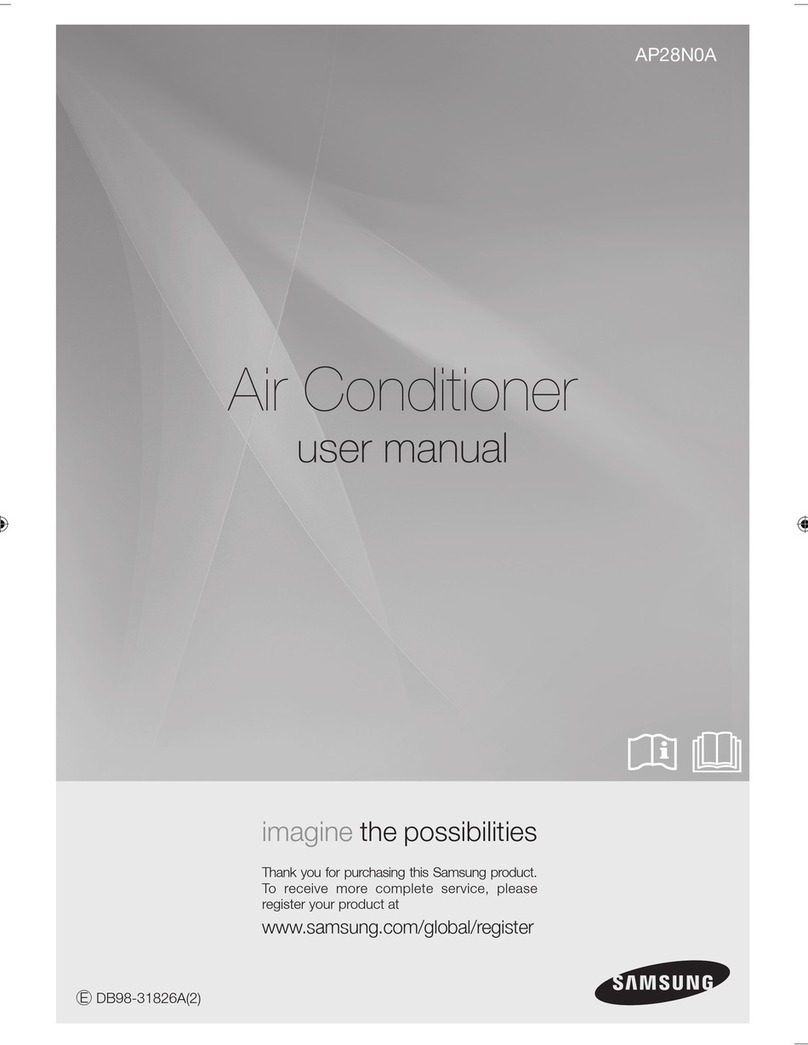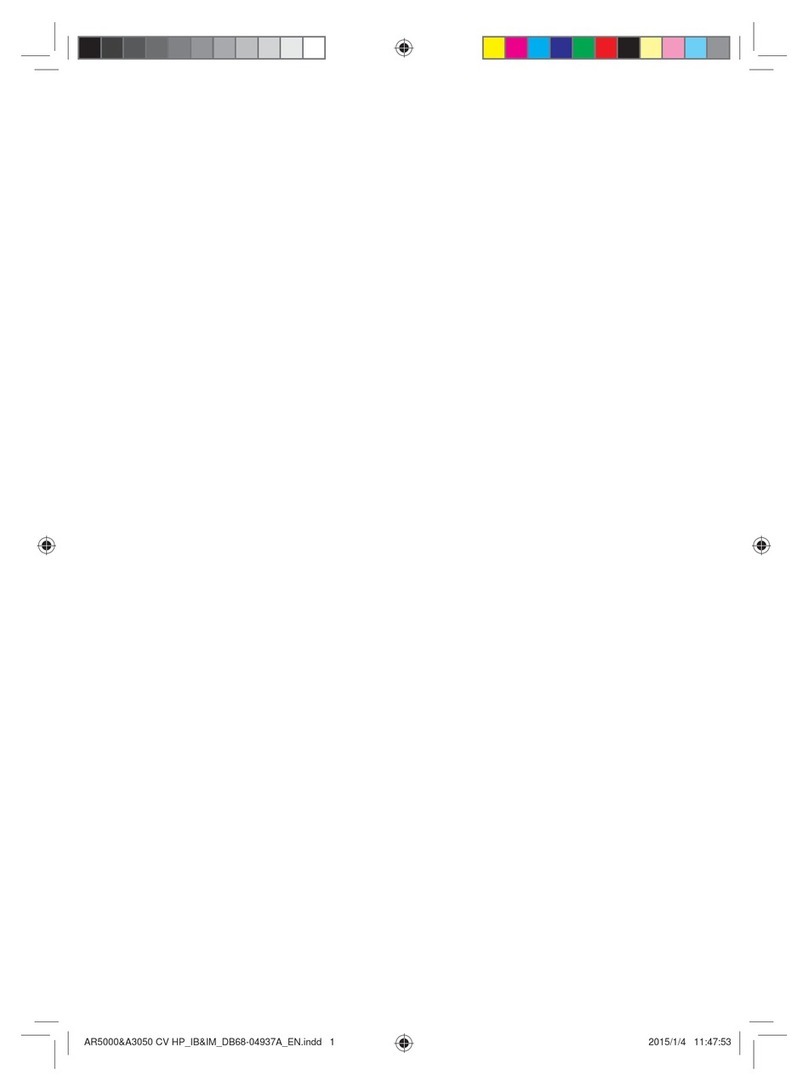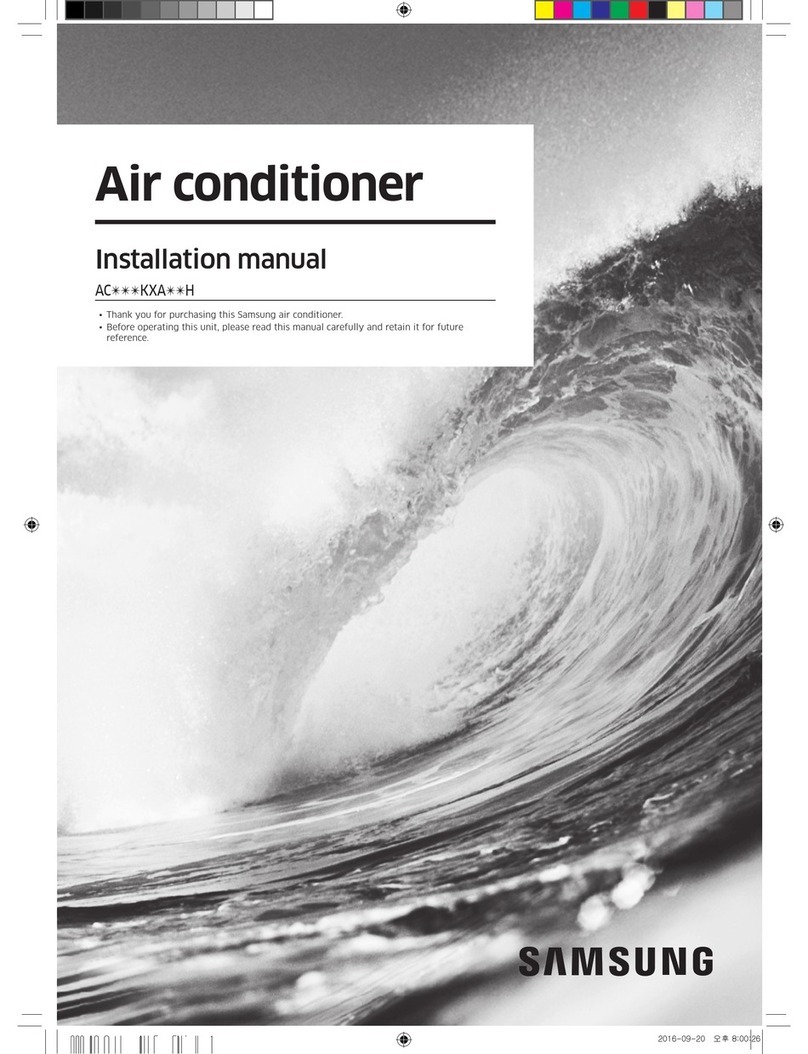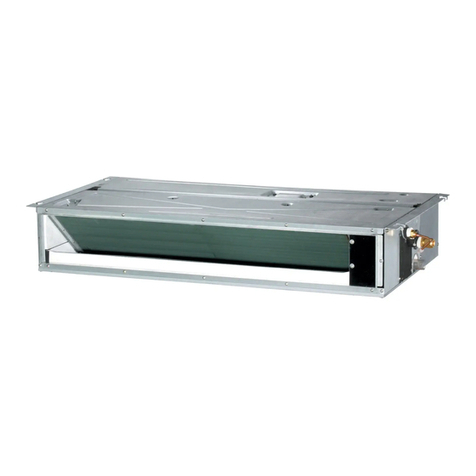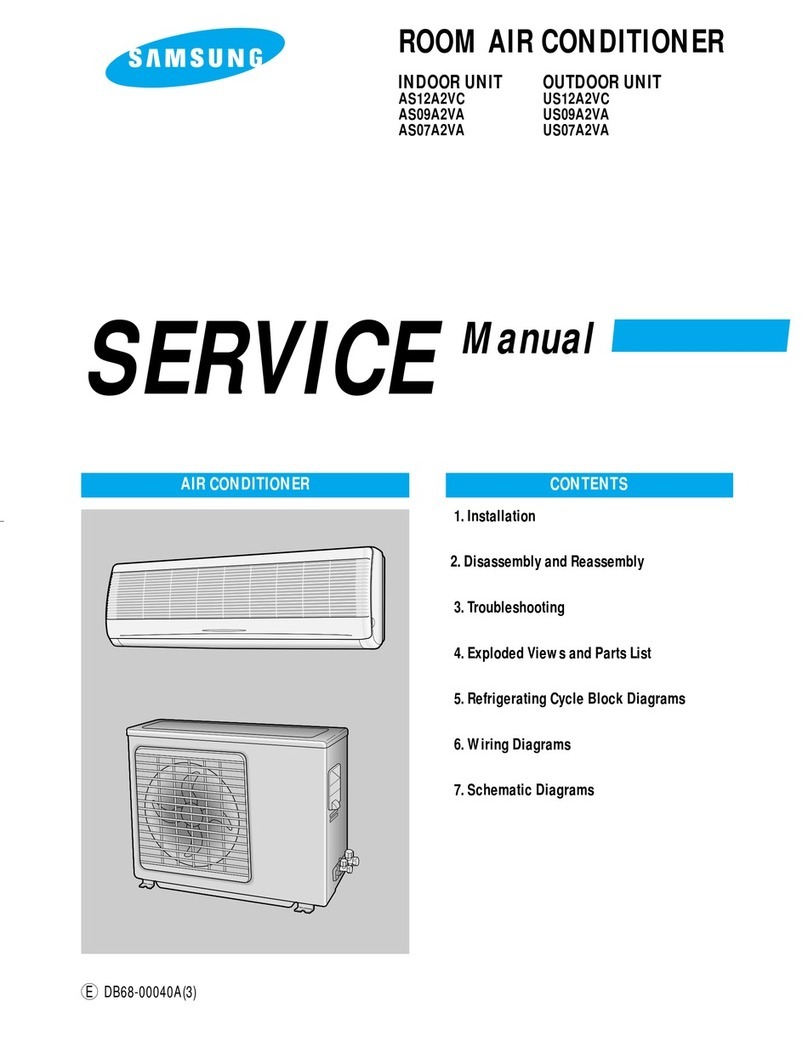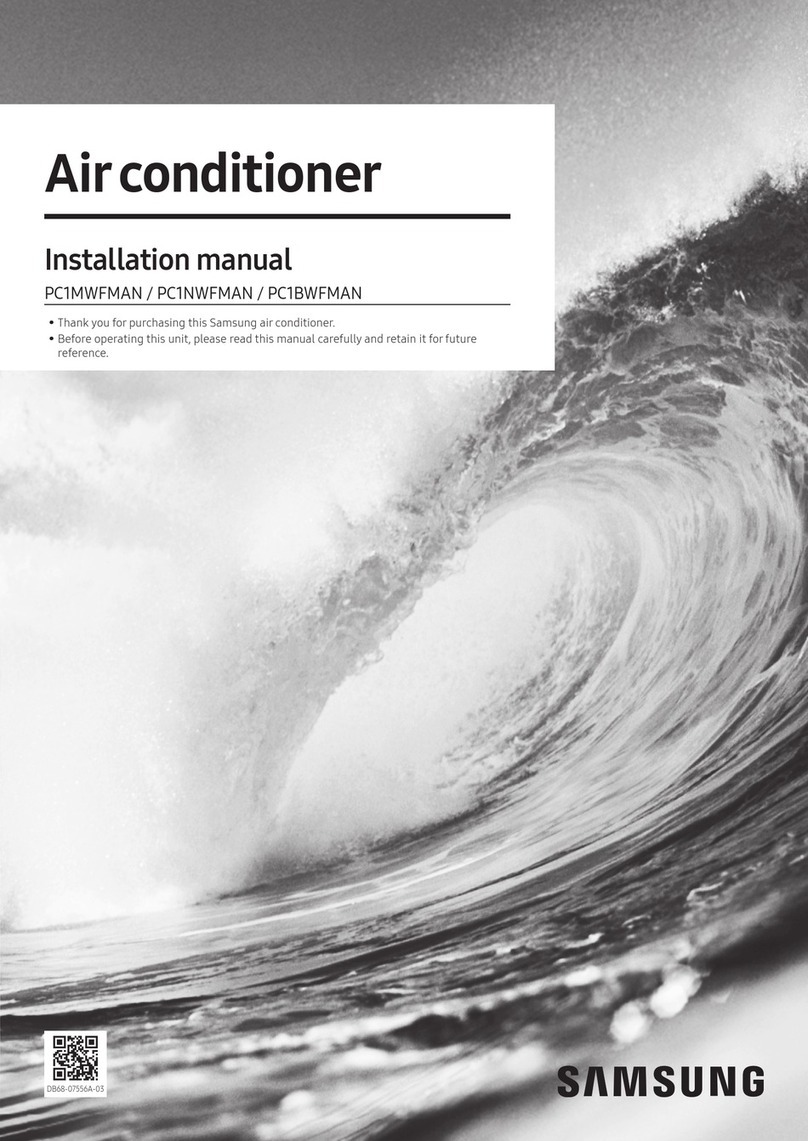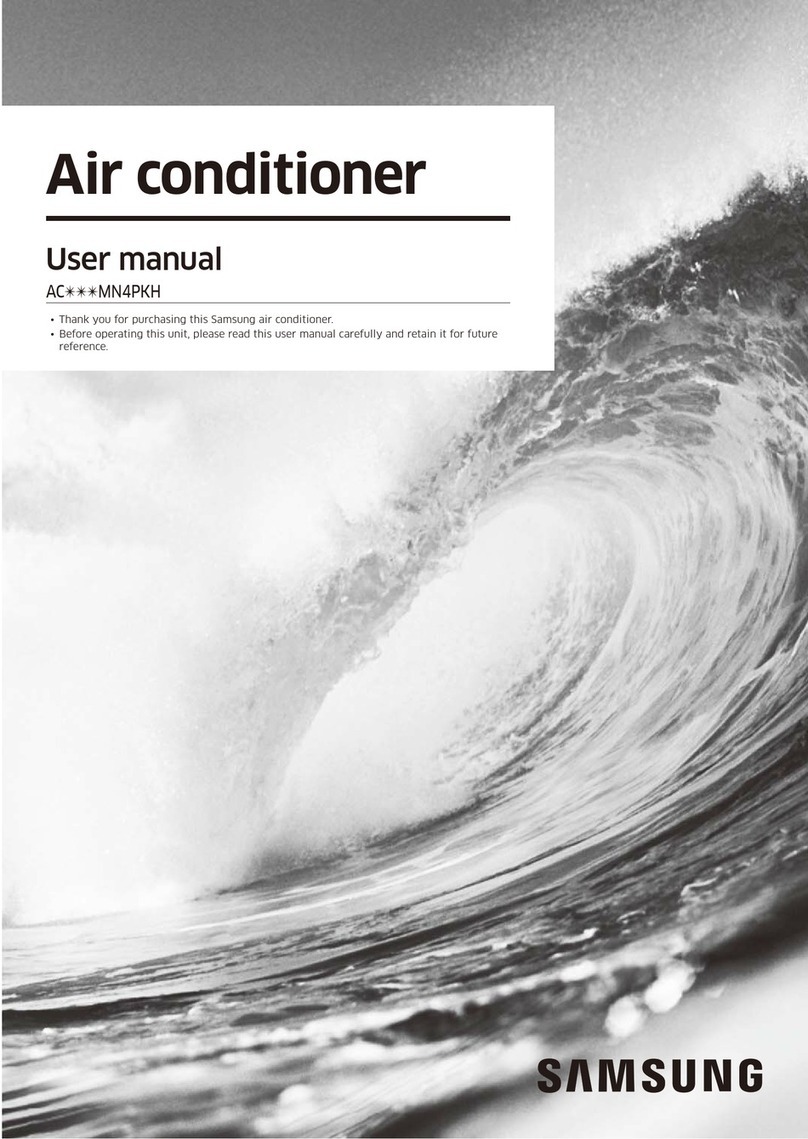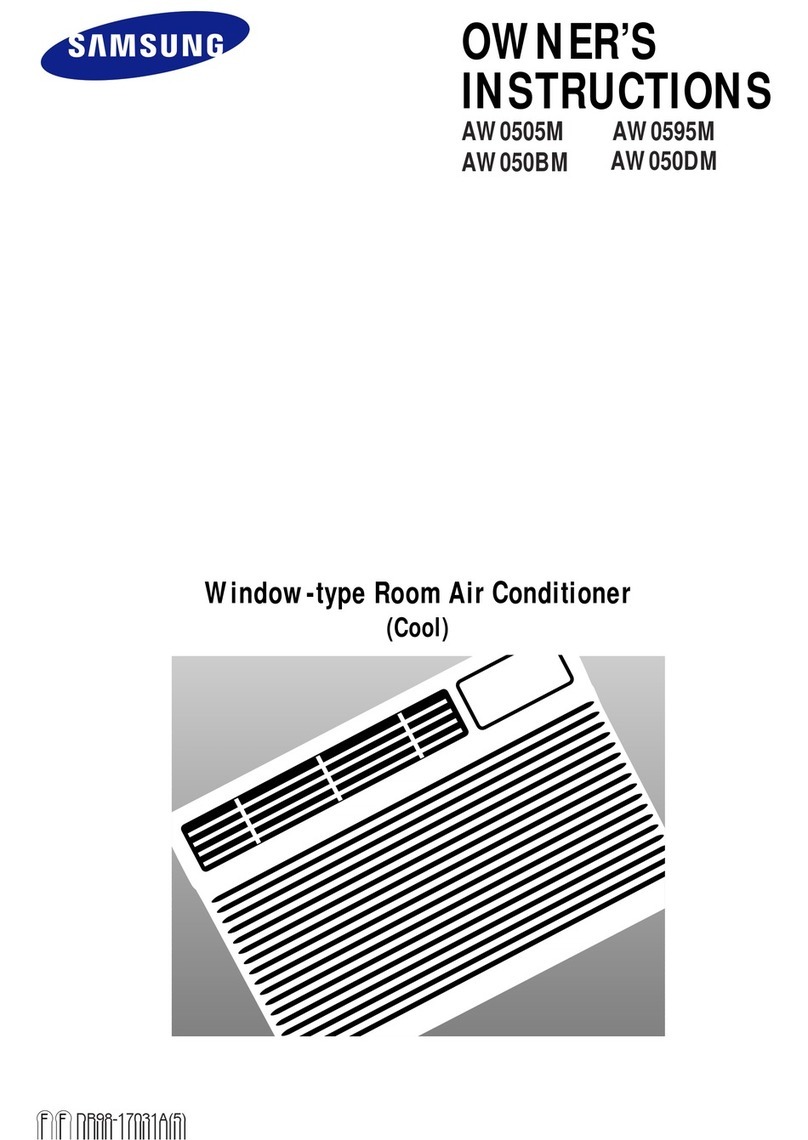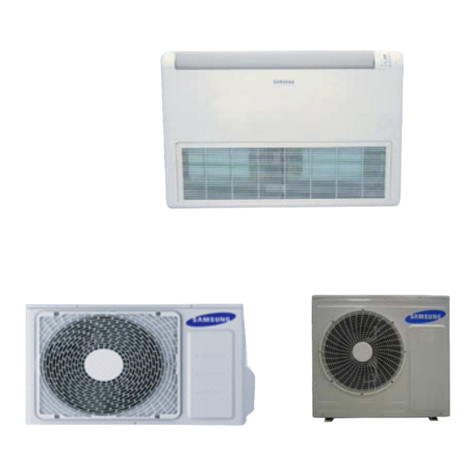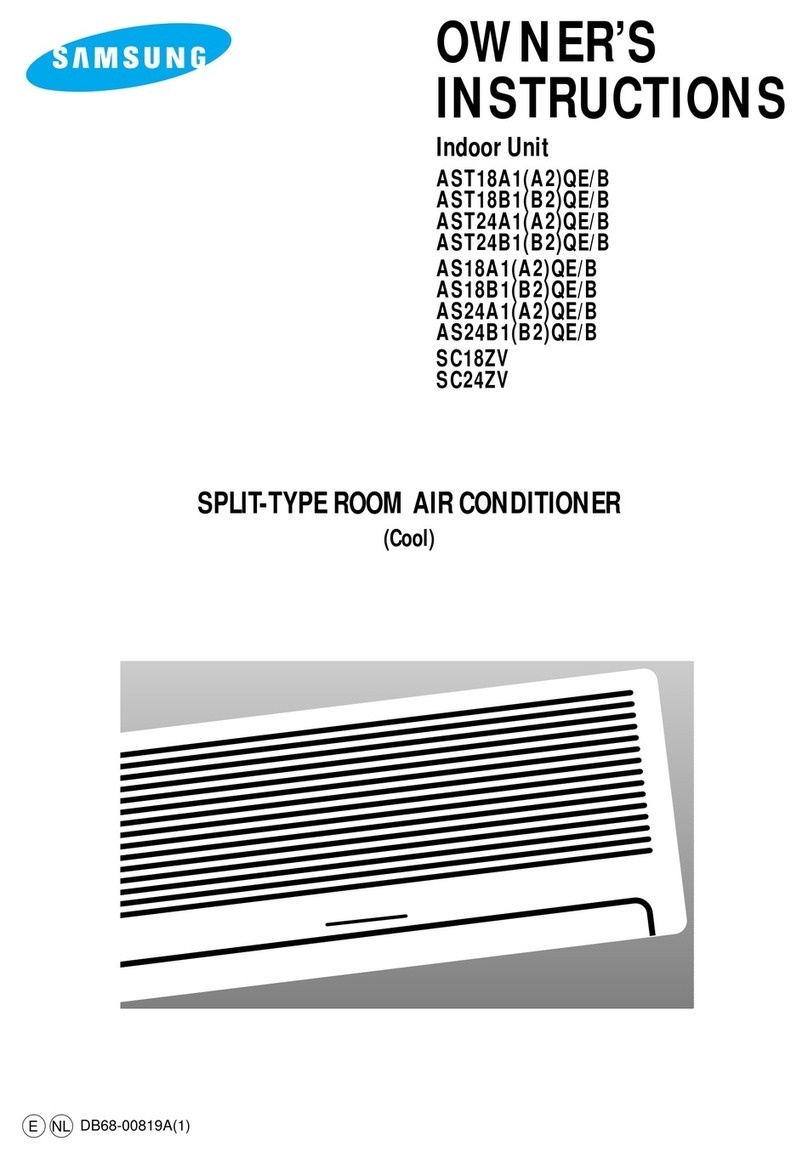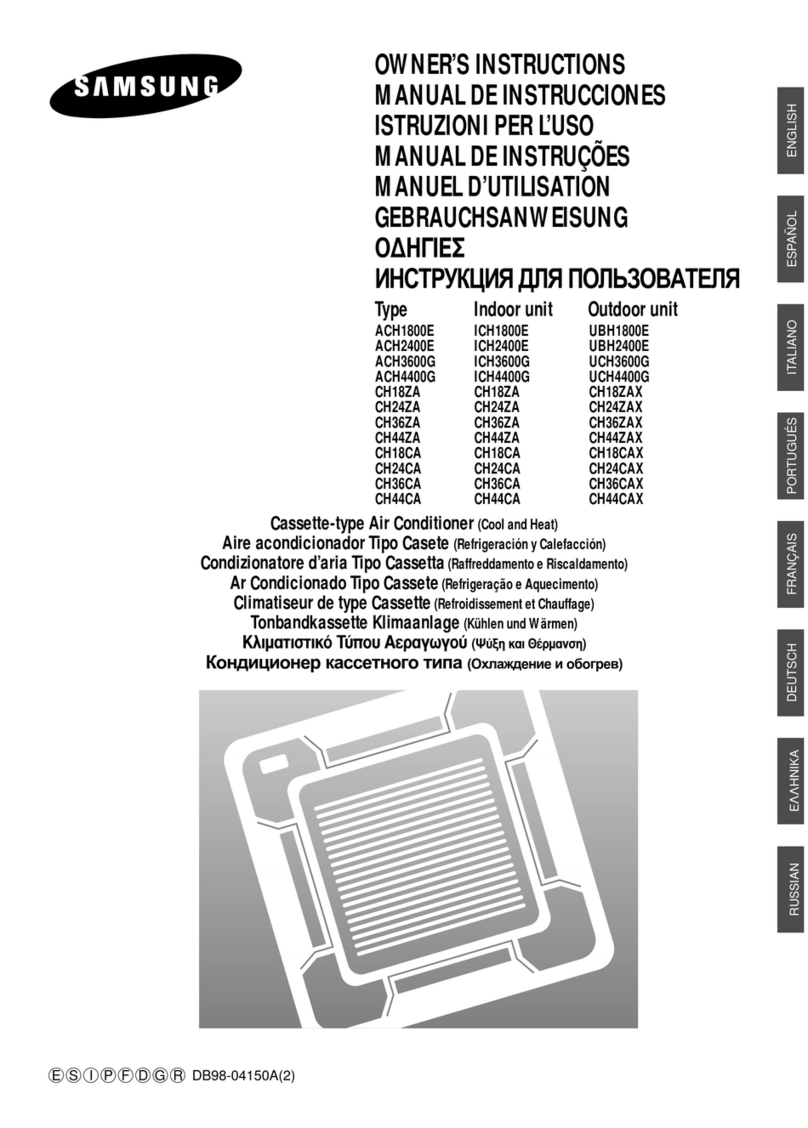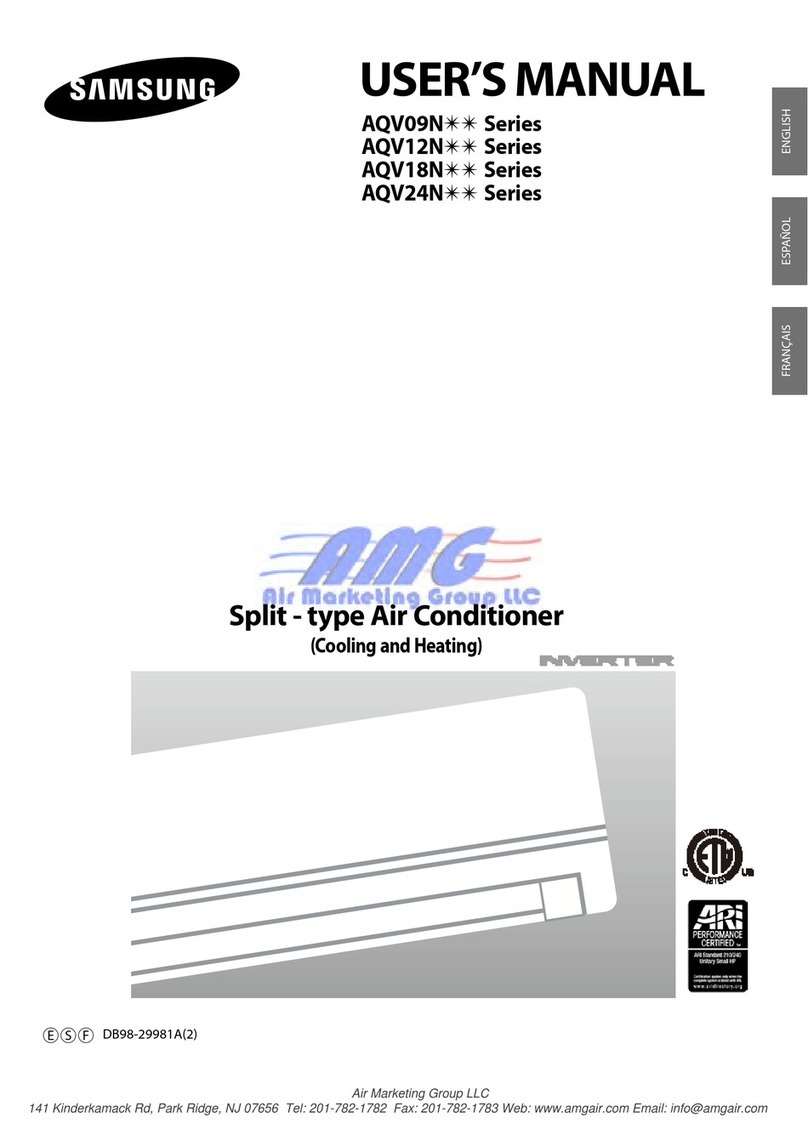
4English
Safety Information
Installing the unit
WARNING
IMPORTANT: When installing the unit, always remember to
connect first the refrigerant tubes, then the electrical lines.
• Always disassemble the electric lines before the refrigerant
tubes.
• Upon receipt, inspect the product to verify that it has not been
damaged during transport. If the product appears damaged,
DO NOT INSTALL it and immediately report the damage to the
carrier or retailer (if the installer or the authorized technician
has collected the material from the retailer.)
• After completing the installation, always carry out a functional
test and provide the instructions on how to operate the air
conditioner to the user.
• Do not use the air conditioner in environments with hazardous
substances or close to equipment that release free flames to
avoid the occurrence of fires, explosions or injuries.
• Excessive indoor humidity or clogged condensate drain lines
may cause water to drip from indoor units. Do not install the
indoor unit where dripping could result in damage to property,
such as above electronic equipment or other sensitive
instruments
• Our units should be installed in compliance with the spaces
shown in the installation manual, to ensure accessibility from
both sides and allow repairs or maintenance operations to be
carried out. The unit’s components should be accessible and
easy to disassemble without endangering people and objects.
For this reason, when provisions of the installation manual
are not complied with, the cost required to access and repair
the units (in SAFETY CONDITIONS, as set out in prevailing
regulations) with harnesses, ladders, scaffolding or any other
elevation system will NOT be considered part of the warranty
and will be charged to the end customer.
Power supply line, fuse or
circuit breaker
WARNING
• Always make sure that the power supply is compliant with
current safety standards. Always install the air conditioner in
compliance with current local safety standards.
• Always verify that a suitable grounding connection is available.
• Verify that the voltage and frequency of the power supply
comply with the specifications and that the installed power
is sufficient to ensure the operation of any other domestic
appliance connected to the same electric lines.
• Always verify that the cut-off and protection switches are
suitably dimensioned.
• Verify that the air conditioner is connected to the power supply
in accordance with the instructions provided in the wiring
diagram included in the manual.
• Always verify that electric connections (cable entry, section
of leads, protections…) are compliant with the electric
specifications and with the instructions provided in the wiring
scheme. Always verify that all connections comply with the
standards applicable to the installation of air conditioners.
• Devices disconnected from the power supply should be
completely disconnected in the condition of overvoltage
category.
• Be sure not to perform power cable modification, extension
wiring, and multiple wire connection.
– It may cause electric shock or fire due to poor connection,
poor insulation, or current limit override.
– When extension wiring is required due to power line
damage, refer to "Step 14 Optional:Extending the power
cable" in the installation manual.
CAUTION
Make sure thatyou earth the cables.
• Do not connect the earth wire to the gas pipe, water pipe,
lighting rod or telephone wire. If earthing is not complete,
electric shock or fire may occur.
Install the circuit breaker.
• If the circuit breaker is not installed, electric shock or fire may
occur.
Make sure that the condensed waterdripping from the drain hose
runs out properlyand safely.
Install the powercable and communication cable of the indoor
and outdoorunit at least1m away from the electric appliance.
Install the indoorunit away from lighting apparatus using the
ballast.
• If you use the wireless remote control, reception error may
occur due to the ballast of the lighting apparatus.
Do not use the indoorunit forpreservation of food items, plants,
equipment, and art works. This may cause deterioration of their
quality.
Do not install the indoorunit if it has any drainage problem.
Safety Information
